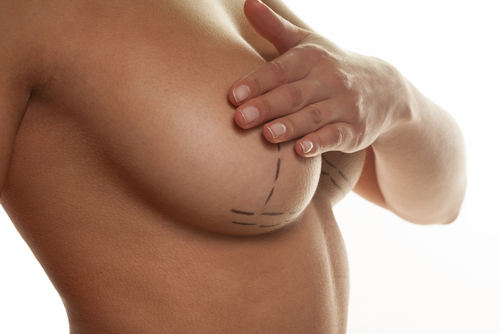Behind the Surface: What Causes Rippling in Breast Implants?
Posted on: February 21, 2024
Breast implants rippling is a concern for individuals seeking to enhance their appearance through augmentation surgery. This phenomenon, where the surface of the implant becomes noticeable under the skin, can affect both the aesthetic outcome and the individual’s self-confidence. Understanding the causes behind this issue, including factors like implant type and placement technique, is crucial for those considering breast implants. Exploring preventive measures and treatment options available plays a significant role in achieving satisfactory results while minimizing risks associated with rippling.
Understanding Breast Implant Rippling
Definition
Breast implant rippling refers to the appearance of wrinkles or folds on the breast. These can sometimes be seen or felt through the skin. It is not unusual but varies among individuals.
Rippling occurs when the implant’s surface becomes visible under the skin. This might happen due to several factors, including low body fat and thin skin. The type of implant also plays a role in this phenomenon.
Visual Characteristics
The visual signs of rippling are distinct. They appear as lines or waves across the breast surface. Sometimes, they’re only noticeable when bending over or lying down.
These characteristics can affect one’s self-esteem and comfort with their body image. Many seek correction for aesthetic reasons.
Common Areas
Rippling commonly appears in certain areas of the breast. The outer and bottom regions are most affected. Here’s why:
- Outer area: Less tissue coverage makes this part more prone to showing rippling.
- Bottom region: Gravity pulls the implant downwards, stretching the skin and making imperfections like rippling more visible.
Causes of Breast Implant Rippling
Thin Coverage
Thin breast tissue and skin can significantly contribute to the visibility of implant rippling. Individuals with less natural breast tissue are more prone to this complication. This is because there’s less cushioning over the implant.
For those considering augmentation, understanding your body’s natural anatomy is crucial. A thorough evaluation by a surgeon helps identify if you’re at risk due to thin coverage.
Implant Choices
The type and placement of implants play a vital role in rippling risk. Saline implants, known for their firmer feel, may show ripples more than silicone options. Moreover, placing the implant above the muscle increases visibility risks compared to under-the-muscle placements.
Choosing between saline and silicone should involve a discussion about risks like rippling. Your surgeon can guide you on which option suits your body best.
Weight Fluctuations
Weight changes after surgery can impact how your breasts look and feel. Gaining or losing weight might alter skin tightness or stretchiness around the implant area.
It’s important for patients to maintain a stable weight post-surgery to minimize complications such as rippling.
- Maintain a healthy diet
- Engage in regular exercise
- Follow post-operative care instructions closely
Understanding these factors helps manage expectations and prepare for potential outcomes following breast augmentation surgery.
Factors Affecting Breast Implant Rippling
BMI and Elasticity
Body mass index (BMI) and skin elasticity play crucial roles in breast implant rippling. Low BMI often means less natural breast tissue. This makes the implants more noticeable under the skin. Thin individuals might see more rippling.
Having good skin elasticity can reduce rippling risks. Older patients or those with significant weight changes may have less elastic skin. This increases the chances of seeing ripples on their implants.
Implant Size
The size of an implant directly impacts the likelihood of rippling occurring. Larger implants stretch the skin more than smaller ones do. This stretching can make any ripples more visible, especially in slender patients.
Choosing an appropriate size is a balance between desired aesthetic outcomes and minimizing potential complications like rippling.
Saline Fill Levels
Saline implants’ fill levels are another critical factor to consider.
- Underfilling saline implants can cause them to fold or wrinkle, leading to visible rippling.
- Conversely, overfilling might reduce this risk but could lead to firmer breasts than desired.
It’s essential for surgeons to fill saline implants correctly based on specific guidelines and patient anatomy to avoid these issues.
Fill Material Impact on Breast Implant Rippling
Silicone vs Saline
Silicone and saline implants have different effects on rippling. Silicone implants are less likely to show rippling than saline ones. This is because silicone gel has a consistency similar to human fat, making it blend more naturally with body tissues.
Saline implants, however, are filled with a saltwater solution. They can sometimes create visible ripples under the skin, especially if overfilled or underfilled. Women with thinner skin or less breast tissue may notice this more.
Cohesive Gel Advantage
Cohesive gel silicone implants offer an even greater reduction in visibility of rippling. These implants use a thicker type of silicone gel that maintains its shape better than traditional silicone fillings.
This thickness helps the implant resist folding or wrinkling, which is often the cause of visible rippling in other types of implants. Patients choosing cohesive gel options report higher satisfaction rates due to this feature.
Shell Texture Role
The texture of an implant’s shell also plays a crucial role in mitigating ripple effects. Textured shells help anchor the implant in place, reducing movement that could lead to rippling.
Smooth-shell implants might move more within the breast pocket. This movement increases chances for rippling compared to their textured counterparts.
- Pros:
- Less movement
- Reduced risk of capsular contracture
- Cons:
- May feel firmer
- Slightly higher complication rate post-surgery
Preventing Breast Implant Rippling
Right Implant Choice
Choosing the right implant type and size is crucial. Your body structure plays a significant role in this decision. A well-suited implant minimizes the risk of rippling or wrinkle formation.
Implants too large for your frame can stretch the skin unnaturally. This stretching might lead to visible rippling later on. Conversely, implants that harmonize with your body’s dimensions are less likely to cause issues.
Experienced Surgeon
Selecting an experienced surgeon is equally important. Expert surgeons understand how to place implants in a way that reduces rippling chances.
They consider factors like tissue thickness and chest anatomy before recommending an implant type or size. Their expertise ensures that the implants sit correctly under your skin, minimizing potential problems.
Stable Weight Maintenance
Maintaining a stable weight helps prevent skin stretching which could exacerbate rippling effects. Sudden weight changes alter your breast shape and size, affecting how implants look and feel.
A balanced diet and regular exercise contribute to keeping your weight steady. This stability supports optimal implant appearance over time.
Surgical Solutions for Breast Implant Rippling
Replacement Options
Implant replacement or adjustment is a common solution. Surgeons may suggest replacing the current implants with ones of a different type or size. This can help reduce rippling.
Options include switching to implants with a more cohesive gel. These tend to show less rippling than saline implants. Another option is adjusting the size or shape of the implant to better fit the patient’s body and provide more coverage.
Fat Grafting
Fat grafting adds extra tissue over implants. It involves taking fat from another part of your body and injecting it around the implant area.
This method increases tissue thickness, covering implants better. It helps smooth out any visible ripples on the surface of the skin.
Position Change
Changing an implant’s position might be recommended. Moving implants from subglandular (above muscle) placement to submuscular (below muscle) can offer more coverage.
This switch provides additional layers over implants, reducing chances of rippling visibility. A surgical technique called fascial flap may also be utilized in certain cases to enhance outcomes by providing extra padding over implants, thus further minimizing rippling effects.
Recovery After Breast Implant Revision Surgery
Recovery Timeline
The recovery timeline after breast implant revision surgery varies. Most patients can return to light activities within a few days. Full recovery, however, may take several weeks.
In the first week, swelling and discomfort are common. By the second week, these symptoms typically begin to subside. It’s crucial for patients to follow their surgeon’s guidance during this period.
Post-Operative Care
Proper care is key for optimal healing after surgery. Patients should:
- Rest adequately and avoid strenuous activities.
- Wear a supportive bra as recommended by their plastic surgeon.
- Keep the surgical area clean to prevent infection.
Following these tips can help ensure a smoother recovery process.
Signs of Complications
While complications are rare, it’s important to watch for signs that could indicate problems:
- Increased redness or swelling at the incision site might suggest an infection.
- Severe pain not relieved by medication could be a sign of other issues.
Patients experiencing these symptoms should contact their reconstructive surgery unit immediately.
Consulting a Cosmetic Surgeon for Breast Implant Rippling
Expectations and Concerns
Discussing expectations and concerns with a cosmetic surgeon is crucial. It helps set realistic goals for revision surgery. Patients should openly talk about why they are considering this procedure.
A detailed conversation can reveal if the desired outcomes are achievable. This step ensures both patient and surgeon understand each other clearly.
Choosing a Surgeon
Selecting the right surgeon is vital. Look for someone experienced in breast implant revisions. They should be board-certified in plastic or cosmetic surgery.
Here are factors to consider:
- Certification by relevant boards.
- Experience with similar cases.
- Positive reviews from previous patients.
An experienced surgeon can minimize risks like rippling after surgery.
Preparing Questions
Before consultation, prepare a list of questions. These should cover risks, benefits, and alternatives to revision surgery. Asking about the surgeon’s experience with preventing rippling is important too.
Questions might include:
- What techniques do you use to reduce rippling?
- Can you show before-and-after photos of similar cases?
- What are the potential complications?
This preparation ensures that all concerns are addressed during the consultation.
Closing Thoughts
Breast implant rippling represents a significant concern for individuals seeking cosmetic enhancement through breast augmentation. Understanding its causes, factors affecting its occurrence, and the impact of fill material is crucial for those considering this procedure. Prevention and surgical solutions offer hope and options for addressing this issue, underscoring the importance of consulting with a qualified cosmetic surgeon. Recovery after breast implant revision surgery is an integral part of the journey towards achieving desired aesthetic outcomes. It highlights the necessity for patients to engage in informed discussions with their surgeons about risks, expectations, and post-operative care.
Individuals experiencing breast implant rippling should consider these insights as a guide to making informed decisions about their health and appearance. Consulting a cosmetic surgeon skilled in addressing implant rippling can provide tailored solutions that align with patient goals. Taking action by seeking professional advice ensures the best possible outcome for those affected by breast implant rippling.
Frequently Asked Questions
What causes breast implant rippling?
Breast implant rippling occurs when the edges of implants become visible through the skin. This can be due to several factors, including thin tissue coverage, low body fat, and the type of fill material used in the implants.
How does fill material impact breast implant rippling?
The fill material plays a significant role in breast implant rippling. Saline implants are more prone to rippling compared to silicone gel implants because saline is less viscous and can create waves or ripples more easily under the skin.
Can anything be done to prevent breast implant rippling?
Preventing breast implant rippling involves choosing the right type of implant and placement for your body type. Opting for silicone over saline, placing implants under the muscle, and ensuring you have adequate tissue coverage can help minimize risk.
Are there surgical solutions for correcting breast implant rippling?
Yes, surgical solutions include replacing saline implants with silicone ones, changing their position from above to below the muscle, or using additional techniques such as fat grafting or acellular dermal matrix products to increase soft tissue coverage.
What should I expect during recovery after a revision surgery for breast implant ripple correction?
Recovery after revision surgery typically involves some degree of swelling and discomfort which generally subsides within a few weeks. Patients are advised to follow their surgeon’s post-operative care instructions closely for optimal healing.
Why is it important to consult a cosmetic surgeon if experiencing breast implant rippling?
Consulting a cosmetic surgeon is crucial because they can assess your specific situation and recommend tailored interventions. Experienced surgeons will evaluate factors like your anatomy and previous surgeries before suggesting corrective options that align with your aesthetic goals.





